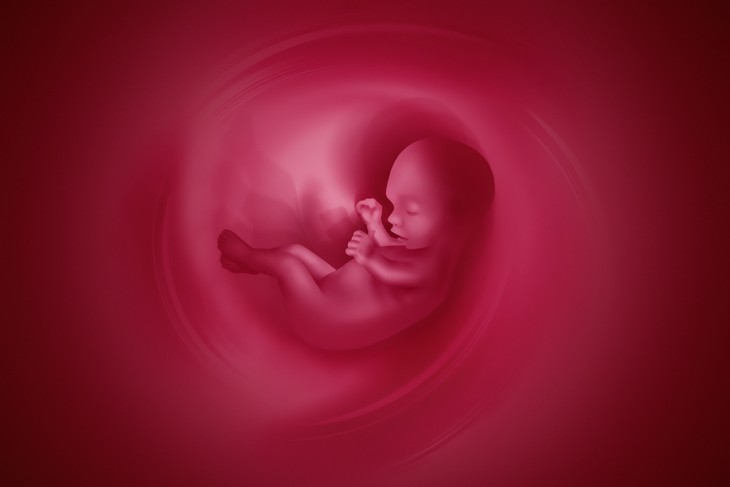Editor’s note: The author wrote this article for a persuasive speech she gave in her advanced-placement English class in her junior year of high school. Her grade was 48 out of 50 (two points were deducted only for voice clarity, not content).
“Brain: The part of the nervous system in vertebrates that is enclosed within the skull, is connected with the spinal cord, and is composed of gray matter and white matter. It is the control center of the central nervous system, receiving sensory impulses from the rest of the body and transmitting motor impulses for the regulation of voluntary movement. The brain also contains the centers of consciousness, thought, language, memory, and emotion.”1
“Death: The end of life of an organism or cell. In humans and animals, death is manifested by the permanent cessation of vital organic functions, including the absence of heartbeat, spontaneous breathing, and brain activity.”2
What term is created by the combination of these two terms?
“Brain death: Permanent brain damage resulting in loss of brain function, manifested by cessation of breathing and other vital reflexes, unconsciousness with unresponsiveness to stimuli, absence of muscle activity, and a flat electroencephalogram for a predetermined length of time. Patients who are brain-dead may still exhibit normal function of the heart, lungs, and other vital organs if they are receiving artificial life support.”3
Is the definition of “brain death” the combination of the definitions of “brain” and “death”? No.
Why has death been redefined?
The medical community began to use the term “brain death” in the late 1960s. A new medical procedure that began around that time was organ transplantation. Organ donation and “brain death” are closely related. To be able to donate vital organs, such as the heart, lungs, whole liver, kidneys, or pancreas, the patient must still be alive.4
The medical community has established certain criteria for making a diagnosis of “brain death.”5 To be considered “brain-dead,” the patient must be in an unresponsive coma, unable to breathe when a ventilator is turned off, without eye movement, without a gag reflex, and unresponsive to movement of the head or placement of ice water in the ear.6 Also, doctors must rule out drug intoxication, hypothermia, and shock, since these conditions cause symptoms that mimic “brain death.”
“Brain-dead” patients are suitable organ donors because they’re alive, but to obtain permission for organ removal, doctors must persuade their families that they’re dead.7
Significant differences
The medical doctors who believe that “brain death” is equivalent to death are basically saying that “brain-dead” patients are the same as dead patients. Yet, there are significant differences between a “brain-dead” patient and a truly dead patient.8
A “brain-dead” patient’s health insurance is probably paying at least part of his medical costs. A health insurance company doesn’t need to pay anything for a dead patient (except for care received prior to death). “Brain-dead” patients are warm and flexible; have a beating heart; and have normal coloring, temperature, and blood pressure. Dead patients are cold and stiff, and don’t respond to anything.
“Brain-dead” patients require general anesthesia when their organs are being harvested. If not, the “brain-dead” patient’s blood pressure will increase and his heart rate will rise. “Brain-dead” patients react much like other patients during surgery, but dead patients don’t need anesthesia because they can’t experience pain.
There have been cases of “brain-dead” mothers being kept alive on life support and delivering their babies. In one such case, a mother was kept alive for 12 weeks and delivered a baby girl in August 2005.9 Another mother was kept on life support for 107 days before she delivered her baby (the longest recorded time for such cases).10 How can a supposedly dead mother give birth to a live baby?
“Brain death” is not equivalent to death. There are so many things that a “brain-dead” patient can do that a corpse cannot do. Life can’t come from death; life precedes death. If you’re faced with doctors telling you a loved one is “brain-dead,” ask them these questions: If they’re dead, why is health insurance covering their medical costs? How can they breathe on a ventilator when a corpse can’t? Why can’t we bury or cremate them right now? The doctors probably won’t know how to respond. And this is when you’ll know that “brain death” is not death.
Hunter Johnson attended Lake High School in Millbury, Ohio, and graduated as valedictorian in May 2012. She also earned the prestigious Jefferson Award for community service; served as president of Students in Action; and lettered in basketball, cross-country, and track for four years. Hunter plans to major in biomedical engineering and exercise science in college. This article was originally published in the March-April 2012 issue of Celebrate Life, American Life League’s bimonthly magazine.
1 The American Heritage Science Dictionary (Houghton Mifflin Harcourt Publishing Company, 2010), s.v. “brain.”
2 Ibid, s.v. “death.”
3 Ibid., s.v. “brain death.”
4 “Vital Organ Transplantation and ‘Brain Death’: A Re–Examination of the Basic Issues” by Dr. Paul A. Byrne,” ed. Randy Engel, Friends of the Michael Fund Newsletter, Fall-Winter 2007,
5 “Brain Death Criteria,” Neurology.com: A Collection of Resources in Neurology.
6 The information regarding lack of response to movement of the head or placement of ice water in the ear comes from Dr. Paul A. Byrne, who has reviewed this article for accuracy.
8 Ibid.
9 Liz Townsend, “Brain-Dead Mother Gives Her Baby the Gift of Life,” National Right to Life News, September 2005.



